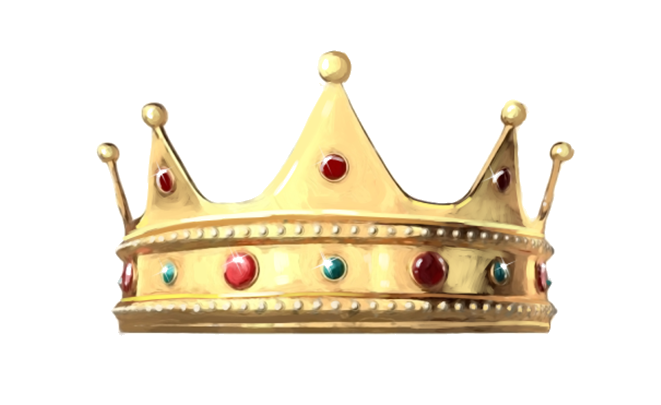Thank you for joining my community–and for sharing a love of all things royal!
I’m excited to share this blog series with you titled, “Who Knew?” These blogs will teach you hidden (and fascinating) historical tidbits about British royalty.
King George VI: Coat of Arms
While I was researching Bertie: The Best Stuttering King, I came upon his royal coat of arms.
At first glance, it looks like a fanciful lion and unicorn. But did you know this image is packed with hidden history and royal meaning?

Crest Image Credit: By Sodacan. This W3C-unspecified vector image was created with Inkscape . – Own work, CC BY-SA 3.0, https://commons.wikimedia.org/w/index.php?curid=10952295
The Lion
First, there’s the lion standing with blood-red claws outstretched. It signifies the might and power of England. The royal crown signifies the monarch.
You may ask, “Why a lion?”
Because to most people, the lion signifies dignity and might. Power and strength. Just look at a lion on the plains of Africa. All muscle and strength as he stalks his prey. He has an earth-rumbling roar and a large, flowing mane. He is one of the mightiest and most magnificent beasts on the planet.
A lion is a great symbol of power! No one wants to tangle with a lion!
The Unicorn
What does the unicorn represent?
Scotland (one of the commonwealth realms of England) and its kings used to believe the unicorn was a symbol of power. The Scottish kings believed that only kings and maidens could keep a unicorn captive, thus the crown collar and chain.
The Latin
Next, we see the lion and unicorn standing on a banner with the Latin inscription Dieu et Mon Droit. If you haven’t taken Latin in school (like I did many eons ago), you may not know the meaning.
The banner reads: “God and My Right.” Simply put, it means that God has given the monarch the power and right to be king.
In the middle of the crest you see blue belts with the somewhat obscured Latin phrase Honi Soit Qui Mal Y Pense, which means, “Shamed be he who thinks ill of it.” This is a motto used by the monarch’s knights.
In a nutshell, it means “Don’t talk bad about the king!” People were killed for speaking badly about the king – it was considered treason.
The Shield
Inside the belts is a battle shield separated into quadrants with more lions and a harp. What do you think these symbols mean?
The three lions shown in these quadrants are thought to be crests created by old kings. It is said that King Henry I (in the 1100’s) originally used a gold lion on a field of red as his royal emblem.
When Henry’s wife died, he married a woman named Adeliza. Her family also used a lion crest. So, now he had two lions on his shield.
Then Henry’s grandson, King Henry II – arguably one of the best British monarchs ever – married Eleanor of Aquitaine, whose family also used the symbol of a lion. That makes three.
Their son, Richard the Lionheart, created the three-lion crest when he became king. It’s been used for centuries ever since.
An alternate theory is that Richard was prideful and liked to boast that he was king of England, plus ruler of Normandy and Aquitaine.
Either way you slice it, there are a lot of kings and lions on the crest!
That covers the first and fourth quadrants, signifying the might of England. The lion in the second quadrant signifies Scotland and its support of the British monarchy.
The harp in the third quadrant is a symbol of Ireland, indicating their support of the British king.
Top & Bottom Elements
At the bottom of the coat of arms, you see a garland of roses, thistle, and shamrocks. These again show the unity of England, Scotland, and Ireland under one ruler.
The top of the crest shows ermine-covered ostrich feathers flowing from a knight’s helmet. The helmet signifies a warrior – and the type of helmet displayed signifies the rank of the warrior. The helmet depicted on this coat of arms is made of gold and is facing forward, that signifies the king. Ermine is a fur which signifies wealth and social status. Being scarce and expensive, it was worn mostly by royalty.
Some say the ostrich feathers are a symbol of peace, or of Wales and its great Welsh warriors.
Others say Edward, the Black Prince (1300’s), killed his rival and took his ostrich feathers emblem as his own.
The correct answer is long lost by now.
Atop it all is an image of the coronation crown topped by another lion wearing a crown. Truly an abundance of kingly images!
Design Your Own Coat of Arms
So, what do YOU think about all this imagery and history?
If you created your own coat of arms, what symbols and mottos would you use?
I would love to hear from you and see YOUR design! If you send your coat of arms to me (susan@susanmwebb.com), it just might appear on the website…with credit of course!
Additional Resources
Bertie: The Best Stuttering King is a historical rhyming picture book for students ages 7-10. It tells the tale of King George VI, his rocky trip to the throne, and his legacy as one of the best kings of 20th Century England.
Learn more here.


